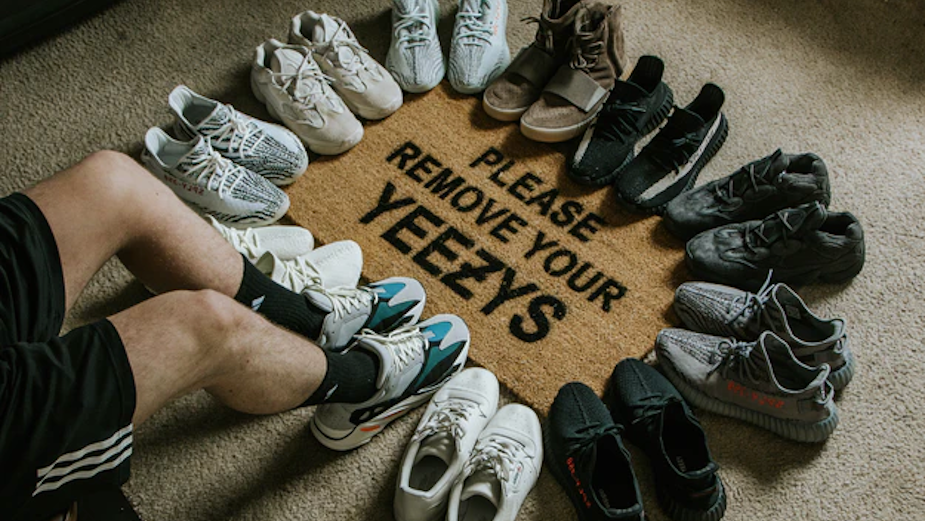
The Future of Taste: What’s Cool and Not Cool - and Who Decides?

Recent weeks have thrown up two funny stories about the idea of taste. That is, what’s deemed to be cool, authentic and tasteful - and who even decides nowadays? The first story is one of ‘good’ taste: Farrow & Ball - the upmarket paint of choice for middle England - has been sold to Danish paint group Hempel in a £500m deal. Farrow & Ball have reportedly enjoyed a 30 per cent rise in annual sales as locked down Brits have had little better to do than smarten up the walls that enclose them. Their acquirers, Hempel, obviously believe that the brand has even greater potential - with international expansion and a broadening of relevance to younger audiences in mind. But, can a brand whose entire appeal is about being authentically old-fashioned (and not slick, modern or international) really make it work on the world stage?
The second story is not of a brand, but a word - and a story of ‘bad’ taste: ‘cheugy’. ‘Cheugy’ (or the ‘opposite of trendy’ as this excellent Refinery29 article explains) is a recent viral phenomenon of a word, which ironically - or perhaps fittingly - has already been deemed a bit past it. It’s an example of a new trend that owes its fame to pop culture engine TikTok, a place where things can blow up and be replaced by the next thing on an almost daily basis. Farrow & Ball’s rise and cheugy’s rapid fall beg some interesting questions about modern tastes. For example, who decides what is tasteful any more? If even Farrow & Ball wants to appeal to millennials, is every brand damned to slug it out for prominence in a world of hashtags and memes?
I think there are three things about the nature of what is tasteful and relevant that are constant - and which every brand would do well to keep in mind.
1. People like to feel they have discovered something tasteful themselves.
And they like to discover that people like them have discovered the same thing. (Aren’t humans funny creatures?). When you feel that you’ve discovered something, it creates in you a sense that you’re a discerning individual (not a herd-follower). So when something ‘blows up’ and is by very definition not your discovery - and nobody else has any sense of ownership over it either - it thus belongs to no tribe, no individual, and nobody will hold it dear.
2. People like things that not everybody else likes.
For anything to be popular or relevant, it must also somehow not please everyone or even piss people off - even if its value is in inclusivity. Patagonia is loathed by some people. IKEA provokes ire in many. So does Farrow and Ball for that matter. Sometimes being ‘not for everyone’ is OK because people are ignorant of the haters. But more often, it’s better than OK, because people like to feel they’ve gone against the grain, as well as simultaneously belonging to a tribe.
3. People like things that they don’t fully understand and that don’t make sense.
Both Farrow and Ball and cheugy-ness fulfil this role, even if both may not ultimately stand the test of time. For example, ‘cheugy’ is intriguing because it is weird and you don’t know how to say it. Importantly you get a sense of what it means, instead of being told exactly what it’s all about. Farrow and Ball doesn’t make sense either - both from a cost and durability perspective - but many are fond of it because it has an air of English decrepitude and faded glory, which appeals to people’s sense of nostalgia and tradition. The minute it looks vaguely polished, it loses its lustre.
How do you stay part of the cultural consciousness?
So which brands really get all this - and have enough staying power to not just be ‘popular’ but to retain enduring influence in culture?
The brands with the most potential to dictate taste are those that achieve a ‘triple whammy’ of behaviours: they act as a library, a cultural water cooler and a haven for subcultures all at the same time.
Take YouTube, Netflix and TikTok as examples - all of whom feature in our new Conscious Brands 100 rankings. They each act as libraries of rich cultural content that people want to come back to again and again; they also surface what is being talked about right now - through things like top 10s, trending hashtags and homepage takeovers. But they also make sure to curate and celebrate weird and wonderful communities of interest. YouTube has long invested in promoting its creators, TikTok has made a name for itself by deliberately showcasing the most bizarre examples of human creativity from all corners of the Earth (and even beyond, thanks to Neil deGrasse Tyson), and Netflix makes room for everything from Bridgerton to Bandersnatch.
This might sound like a simple formula, but not all big brands crack it. For example, both Apple and Amazon both excel at acting as libraries, and Amazon especially has made an art of showcasing what is popular amongst ‘people like you’. But neither brand is strong at simultaneously representing the mainstream and countercultures, unless you count Apple’s attempts to advertise the people ‘Behind the Mac’.
They say there's no point in trying to please everyone. But, as brands look to the future and question how to stay relevant, perhaps there is merit in making more room for everyone - giving people a platform to share their views, tastes and inspirations.













